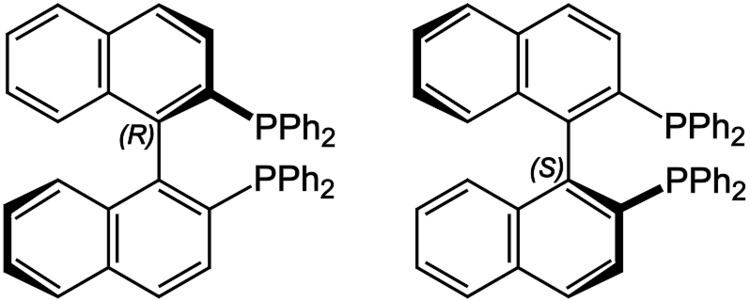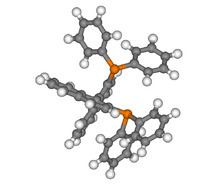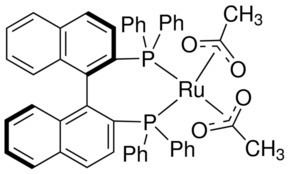Formula C44H32P2 Appearance Colorless solid | Molar mass 622.67 g/mol | |
 | ||
BINAP (2,2'-bis(diphenylphosphino)-1,1'-binaphthyl) is an organophosphorus compound. This chiral ligand is widely used in asymmetric synthesis. It consists of a pair of 2-diphenylphosphinonaphthyl groups linked at the 1 and 1´ positions. This C2-symmetric framework lacks a stereogenic atom, but has axial chirality due to restricted rotation (atropisomerism). The barrier to racemization is high due to steric hindrance, which limits rotation about the bond linking the naphthyl rings. The dihedral angle is approximately 90˚.
Contents

Use as ligand in asymmetric catalysis

BINAP is used in organic synthesis for enantioselective transformations catalyzed by its complexes of ruthenium, rhodium, and palladium. As pioneered by Ryōji Noyori and his co-workers, Rh complexes of BINAP are useful for the synthesis of (–)-menthol.
Silver complexes are also important; BINAP-AgF can be used to enantioselectivly protonate silyl enol ethers.

Subsequent studies revealed that related diphosphines with a narrower dihedral angle between the aromatic faces give catalysts that are more enantioselective. One such ligand is SEGPHOS.
Preparation

BINAP is prepared from BINOL via its bis-triflate derivatives. Both the (R)- and (S)-enantiomers, as well as the racemate, are commercially available. One of the wide applications include chemoselective hydrogenation, where BINAP is conjugated to Rh.
BINOL can be treated with chlorodiphenylphosphine to make phosphinous acid, diphenyl-[1,1'-binaphthalene]-2-2'-diyl ester (BINAPO).
